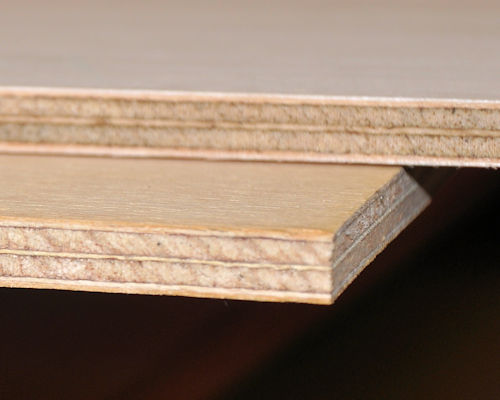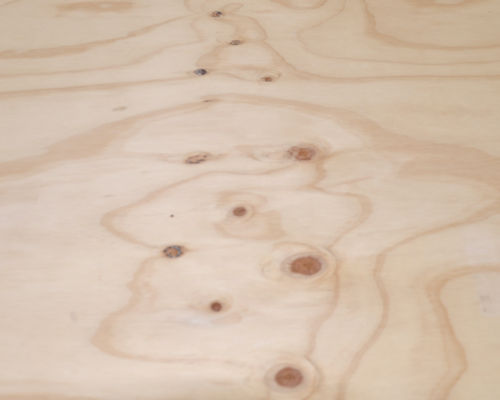Plywood
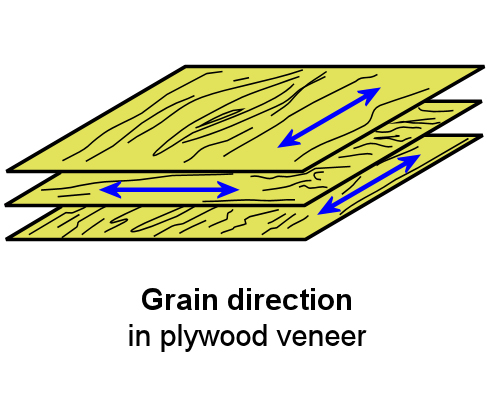 Audio for slide 1 (mp3 |6|KB)
Audio for slide 1 (mp3 |6|KB)
Plywood is made up of several 'plies', or layers of wood veneer, glued together and bonded in a high temperature press.
The direction of the grain in each layer runs at right angles to the layer above and below it.
This keeps the board very stable in terms of its overall dimensions, since swelling and shrinking tends to occur across the grain in timber, and the in-between veneers help to resist any movement.

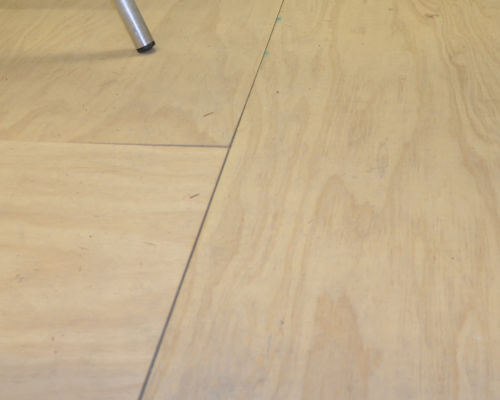 Audio for slide 4 (mp3 |6|KB)
Audio for slide 4 (mp3 |6|KB)
Plywood as an underlay product
The underlay sheets used for resilient floor coverings are generally Type A bond with AC veneers. (A grade face, C grade back).
This allows the blemish-free face to be installed face up, providing a very smooth substrate.
Underlays for floor coverings that don't require a very smooth substrate (e.g. engineered products) often have lower grade surface veneers, such as CD (with the C grade face turned up).

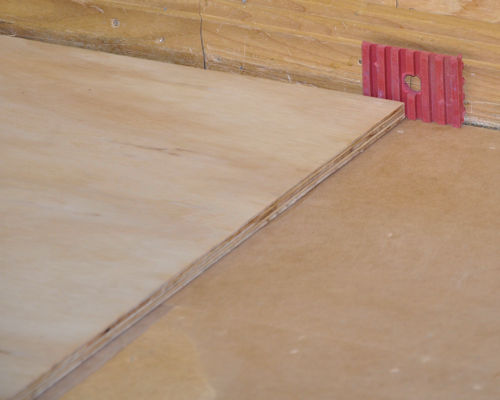 Audio for slide 5 (mp3 |6|KB)
Audio for slide 5 (mp3 |6|KB)
There are various sheet sizes and thicknesses available. The smallest size commonly used for underlay is 1200 x 1200 with a thickness of 5.5 mm.
However, some installers like to use larger sizes for particular jobs, and sometimes thicker sheets if they want to improve the structural integrity of the floor.
Once the boards reach a thickness of 12 mm or more, they are generally supplied in the form of structural ply flooring, with tongues and grooves along the long edges.


Learning activity
Audio 6 (mp3 |6|KB)All underlay products should be stacked neatly when they're stored, both in the warehouse and on the jobsite.
But as the sheet size gets larger, it becomes even more important to ensure that the panels are supported properly in the stack, especially if they're going to be stored for a period of time.
Let's say the plywood sheets shown in the two images below are 2400 x 1200 in size.
You can see that one stack is neat and tidy, and the other is terrible.
What makes the stack on the left-hand side so much better than the one on the right?
In other words - if you were unloading a delivery of large plywood sheets by hand, how would you prepare the stack and ensure that the sheets stayed straight and flat?
You may write your answer down in dot points in the Workbook.








